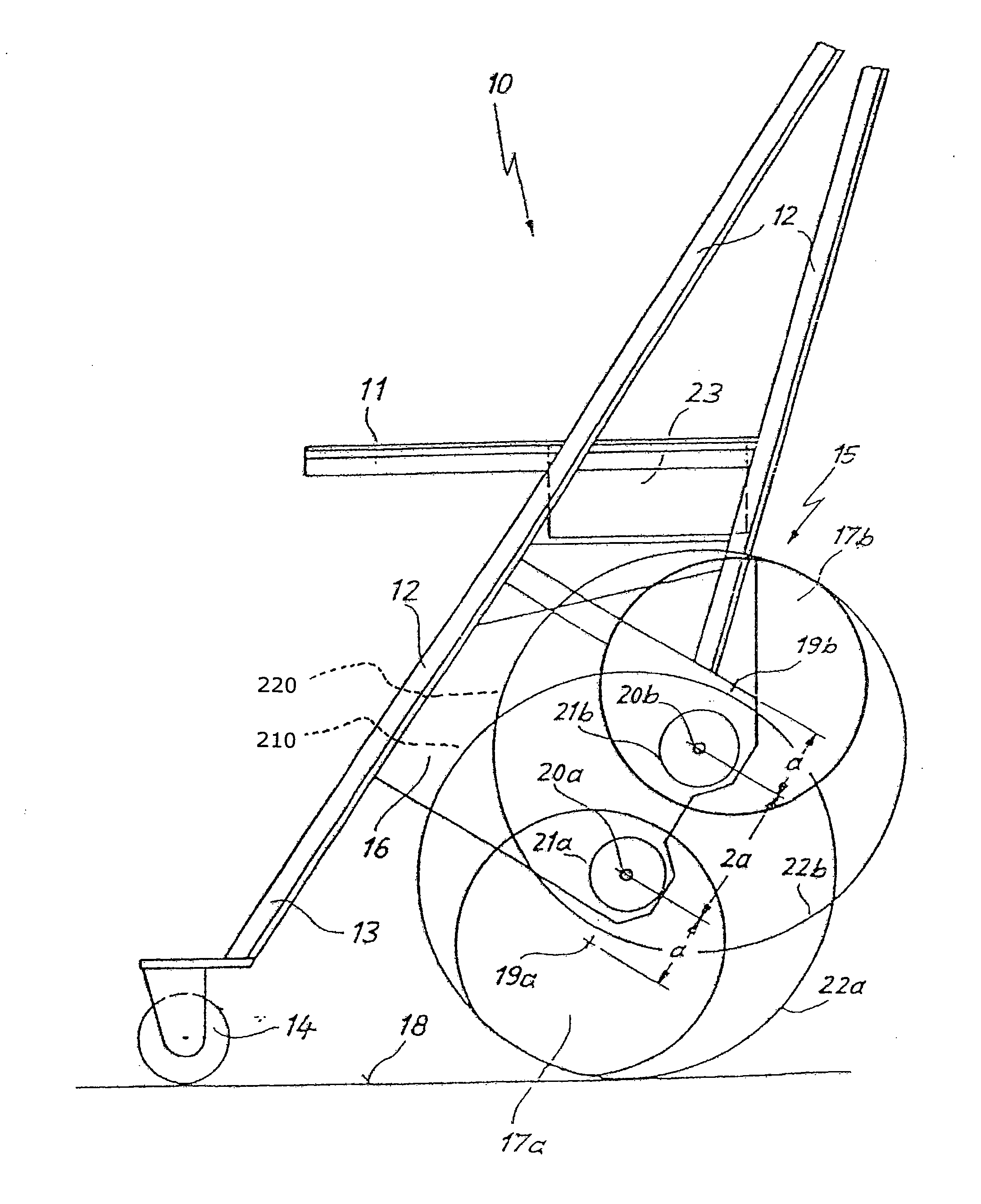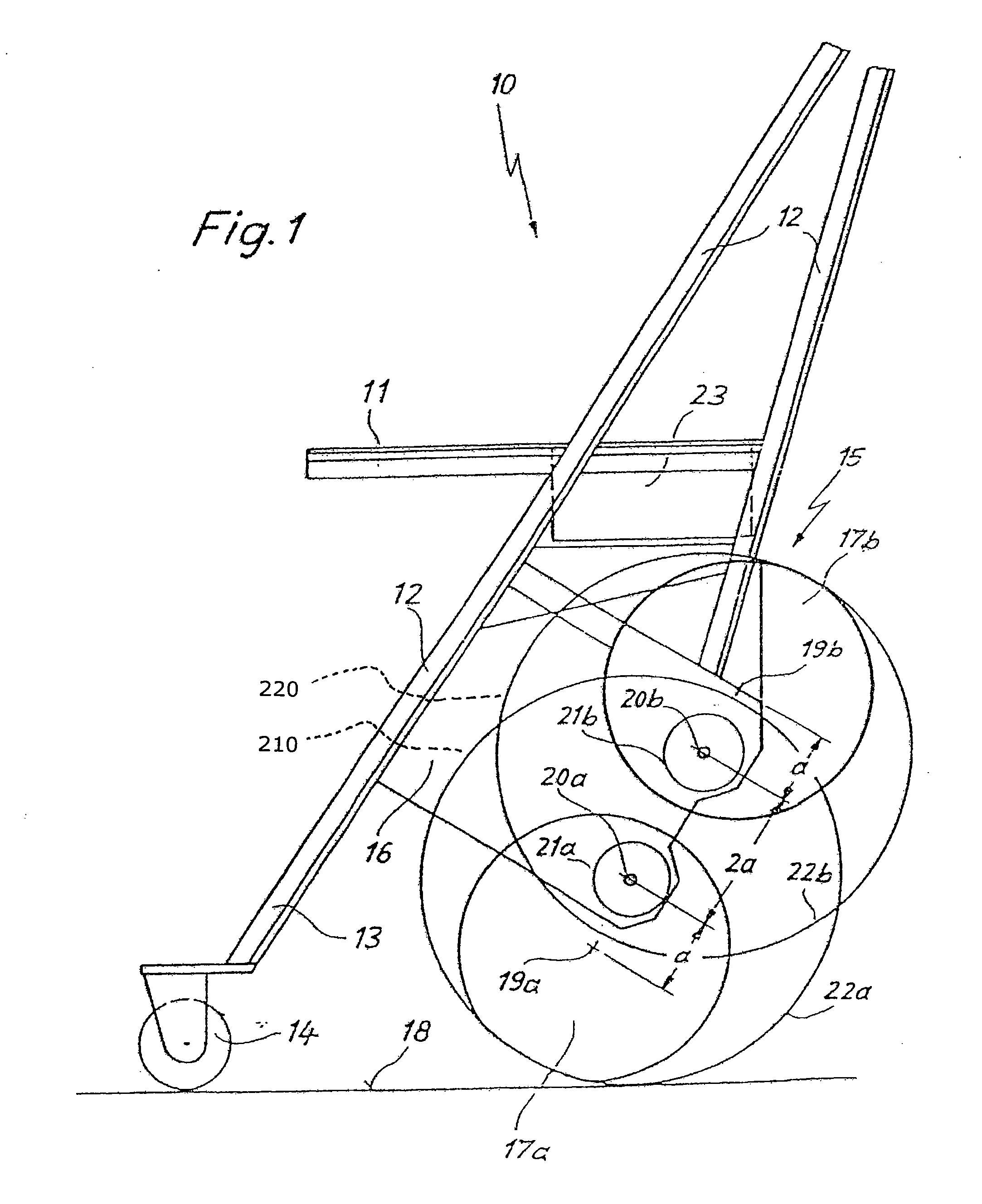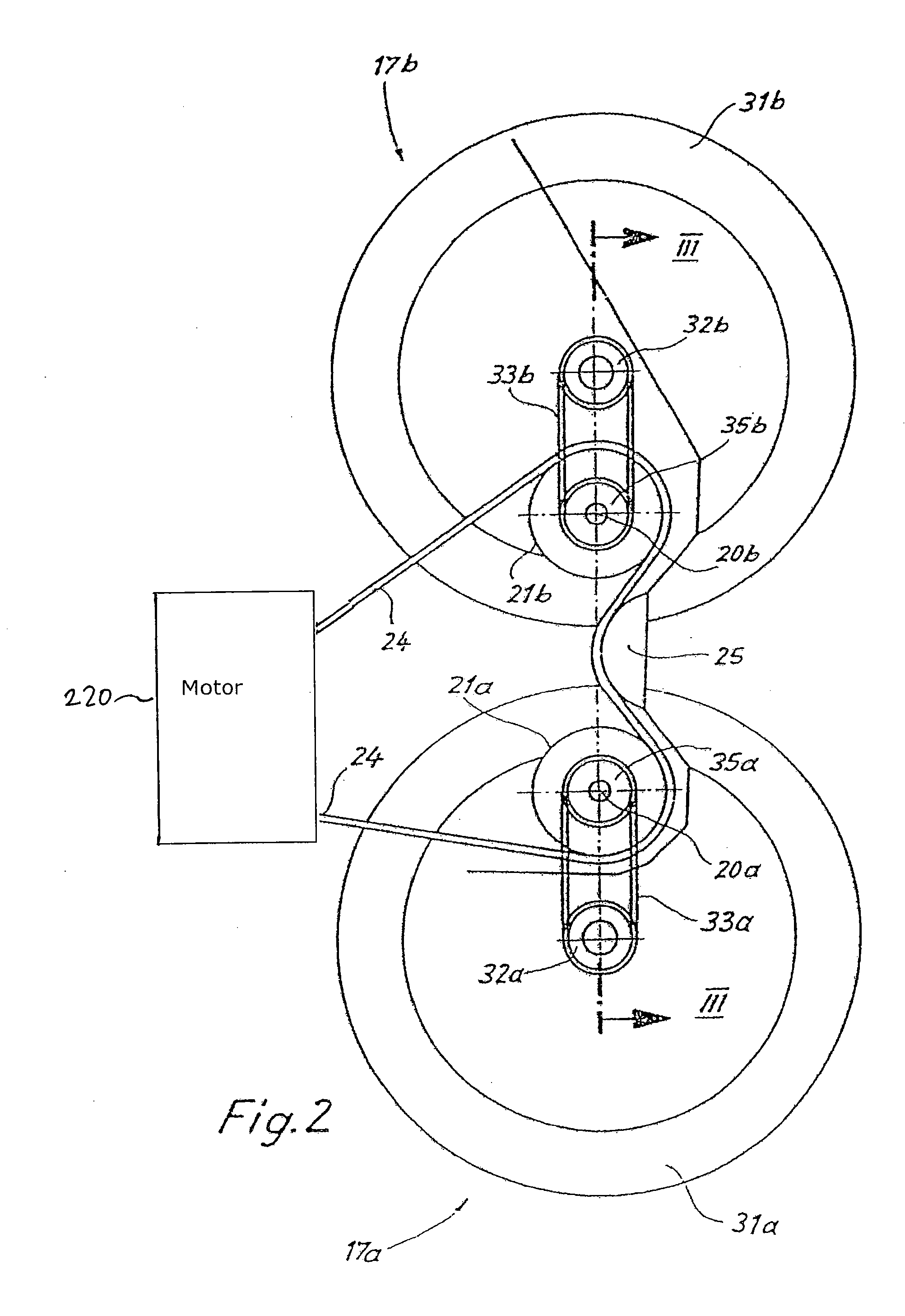Stair-climbing device
a technology of stair-climbing and stair-climbing device, which is applied in the direction of hand carts, wheelchairs/patient transportation, transportation and packaging, etc., can solve the problems of jerky operation, stair-climbing device, and permanent problem of stairs
- Summary
- Abstract
- Description
- Claims
- Application Information
AI Technical Summary
Benefits of technology
Problems solved by technology
Method used
Image
Examples
Embodiment Construction
[0049]FIG. 1 is a schematic side view of an invalid's' wheelchair 10 comprising a seat frame 11 which is connected to a chair frame 12, which at the front runs out into two foot webs 13 which have each one steering roller 14 rotatably mounted. The side view of FIG. 1 only shows the left steering roller 14. Attached to chair frame 12 is a support frame for a stair-climbing device 15, comprising a left support plate 16, as shown in FIG. 1, and an identical right support plate 16 on the right side, which is not shown, of chair 10. To each support plate 16 is fitted a pair of running wheels 17a and 17b, one of which runs on track 18 in the normal position or in the inoperative position of stair-climbing device 15 shown in FIG. 1 and FIG. 4. The exact construction of the pair of running wheels 17a / 17b and the arrangement of the two running wheels 17a and 17b relative to one another and their drive will be described below in more detail as based on FIGS. 2 and 3. FIG. 1 shows the centre p...
PUM
 Login to View More
Login to View More Abstract
Description
Claims
Application Information
 Login to View More
Login to View More - R&D
- Intellectual Property
- Life Sciences
- Materials
- Tech Scout
- Unparalleled Data Quality
- Higher Quality Content
- 60% Fewer Hallucinations
Browse by: Latest US Patents, China's latest patents, Technical Efficacy Thesaurus, Application Domain, Technology Topic, Popular Technical Reports.
© 2025 PatSnap. All rights reserved.Legal|Privacy policy|Modern Slavery Act Transparency Statement|Sitemap|About US| Contact US: help@patsnap.com



